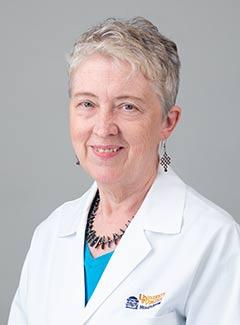
Helen A Gatling-Austin, PT
Physical Therapy
Bio & Overview
Helen Gatling-Austin is one of the few therapists in the U.S. with advanced training in the rehabilitation of patients with facial palsy and synkinesis.
She works closely with facial nerve specialist physicians to help these patients.
Additionally, in her years as a physical therapist, she’s focused primarily on the treatment of complex pain, using manual therapy, functional exercise, and relaxation approaches.
She shares, “It's important to meet people where they are and to focus on their greatest concerns. I need to align my work with what matters to them.”
Helen was born in Jacksonville, Florida to a family of doctors. Following a career as a lighting designer in New York City theater, she attended Columbia University College of Physicians and Surgeons, where she earned a master’s degree in physical therapy.
- Gender
- Female
- Languages
- English
- Age Groups Seen
- Children (2-12)
Adolescents (12-21)
Adults (21-65)
Older Adults (65+)
Highlights
Meet Physical Therapist Helen Gatling-Austin, PT
My name is Helen Gatling-Austin. I'm a physical therapist and a facial nerve rehabilitation specialist. A facial nerve specialist works with people who have a very specific kind of injury, which is damage to the facial nerve. And the facial nerve is a nerve that comes out of the brain, comes across the face and really serves primarily the nerves of the muscles of facial expression. That can be due to a viral infection that can cause that nerve to swell and be temporarily damaged. Sometimes people have cancer tumors in their head and for the surgeon to get to the tumor, they sometimes have cause damage to that nerve. Also, we see people sometimes with head injuries or concussions where there can be even a fracture of the skull in the area of the facial nerve. A typical recovery time for Bell's palsy itself, the first even six months, we don't do much of anything because the nerve can still be healing. So the first six months, we're waiting for the nerve to heal on its own, which it often will do. Very often when the nerve is damaged, it actually recovers. When the nerve comes back online, I think you could say it's a little bit scrambled. So parts of the face move when you don't want them to, or they become tight or different parts of the face get linked together. What most people want back is their smile. And unfortunately, the smile itself is one of the things often most disturbed, not just by the paralysis itself, which can cause the mouth to droop. But when the nerve comes back online, this scrambled situation that I mentioned is called synkinesis, where the eye and the mouth very often are linked together. So someone tries to smile and the eye closes. Unfortunately for a lot of people with facial nerve issues, they have been told by doctors for years, sometimes for years, that there was nothing to be done about it. And then to be able to tell that person and hey, actually there are some things to be done, and to have them come and I can look at her and see what we can work on and see that there's things that we can definitely get better. That's very rewarding.